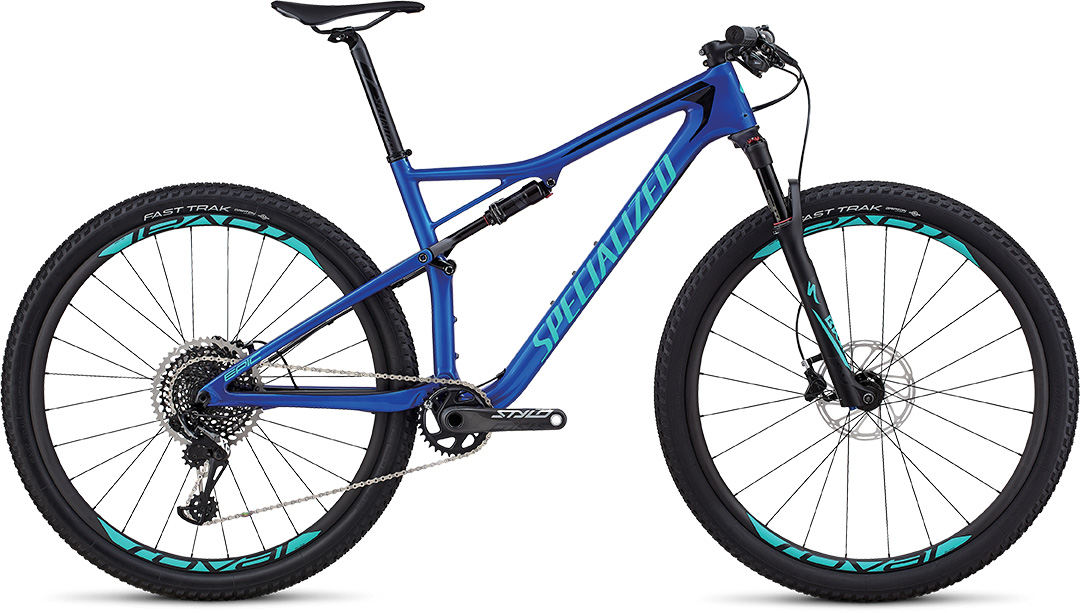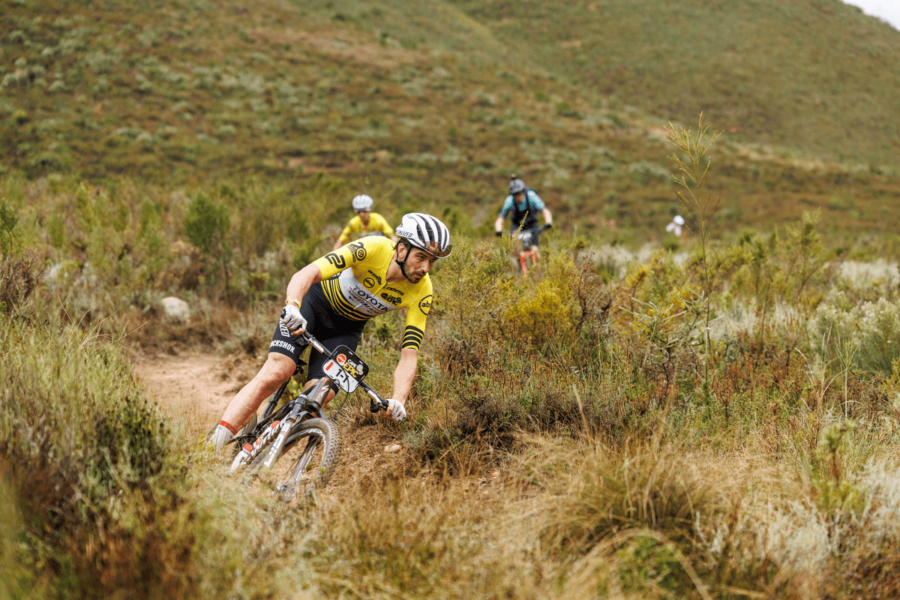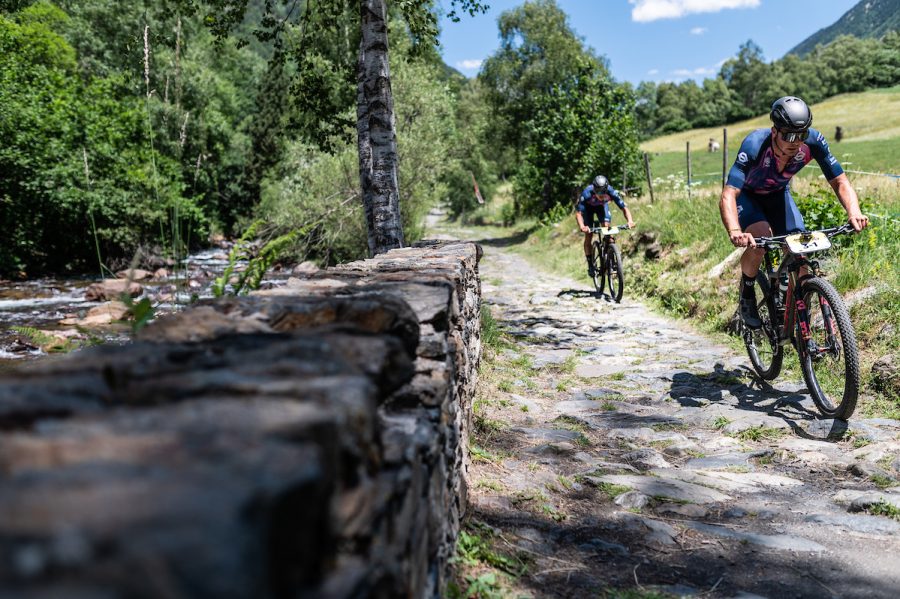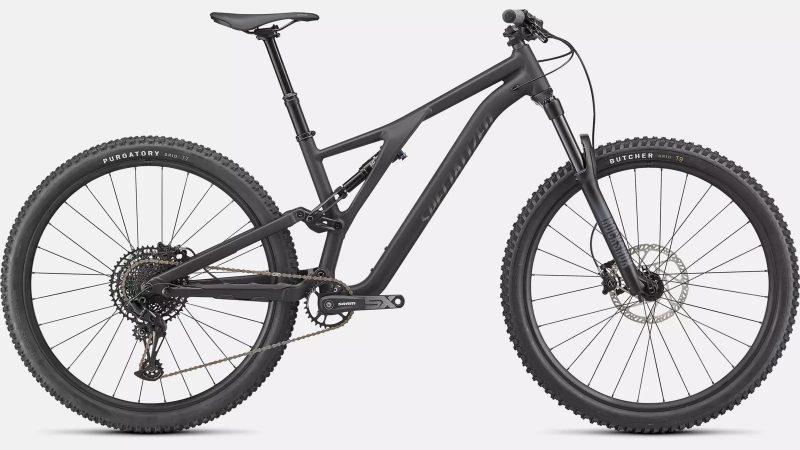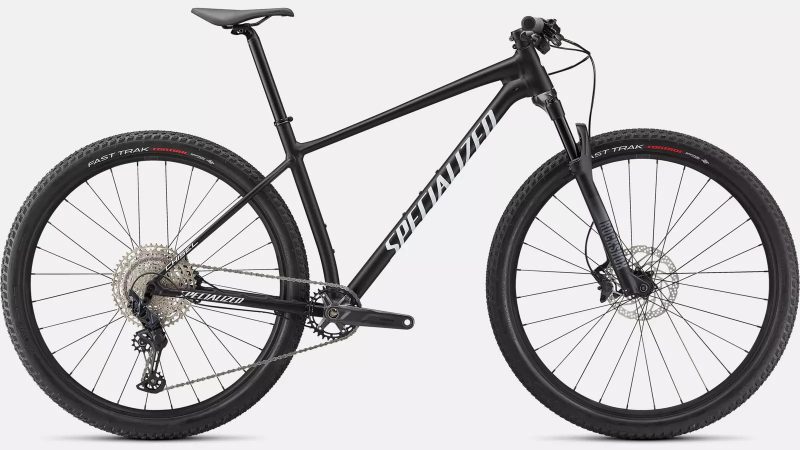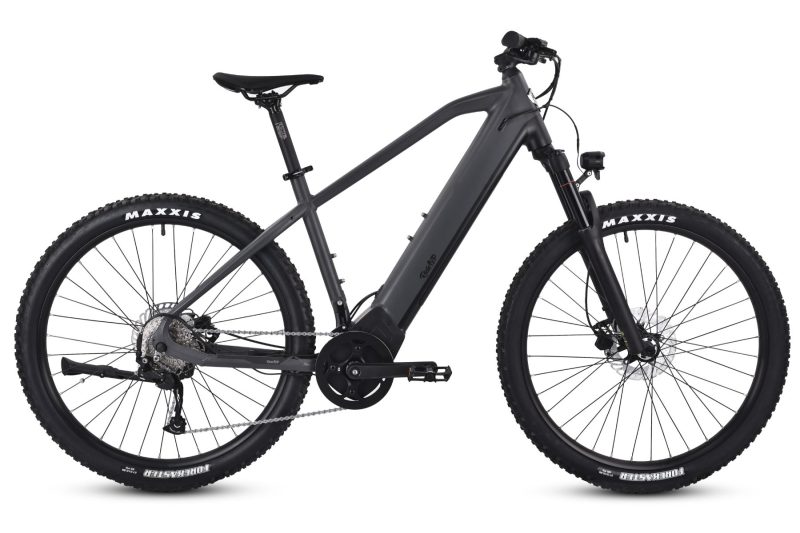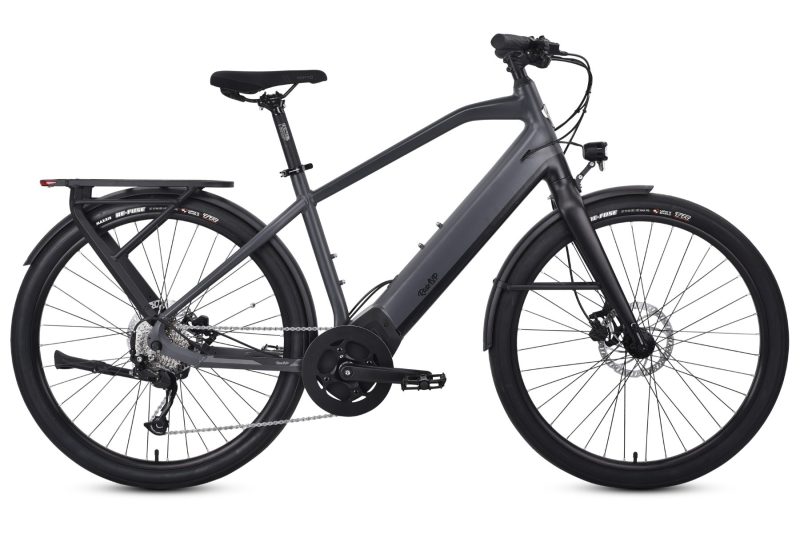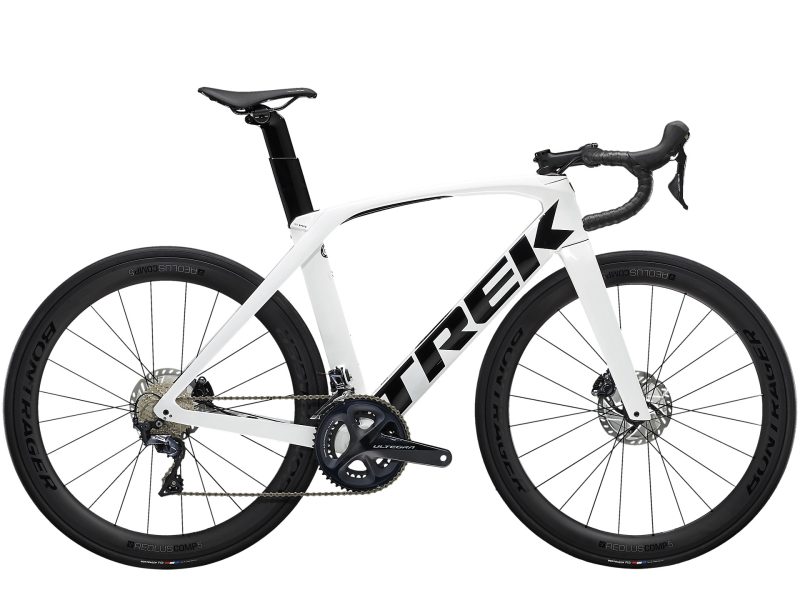Specialized pulled out their 2018 Epic FSR “big gun” XC machine. Built to go fast, and top the podium with excellence. Specialized have evolved the Epic FSR series with the trail conditions presented at XC races. In other words; the trail is tough, but the 2018 Epic FSR is tougher!
New Tech:
An innovation that started with Specialized’s new Tarmac, has now made its way onto the Epic; is Rider-First Engineering on the carbon frame. Specialized designed the FSR frame completely around the rider expected to use this bike. This way they were able to shave-off 525-grams on the frame. A lightweight innovation that any XC rider dreams of!
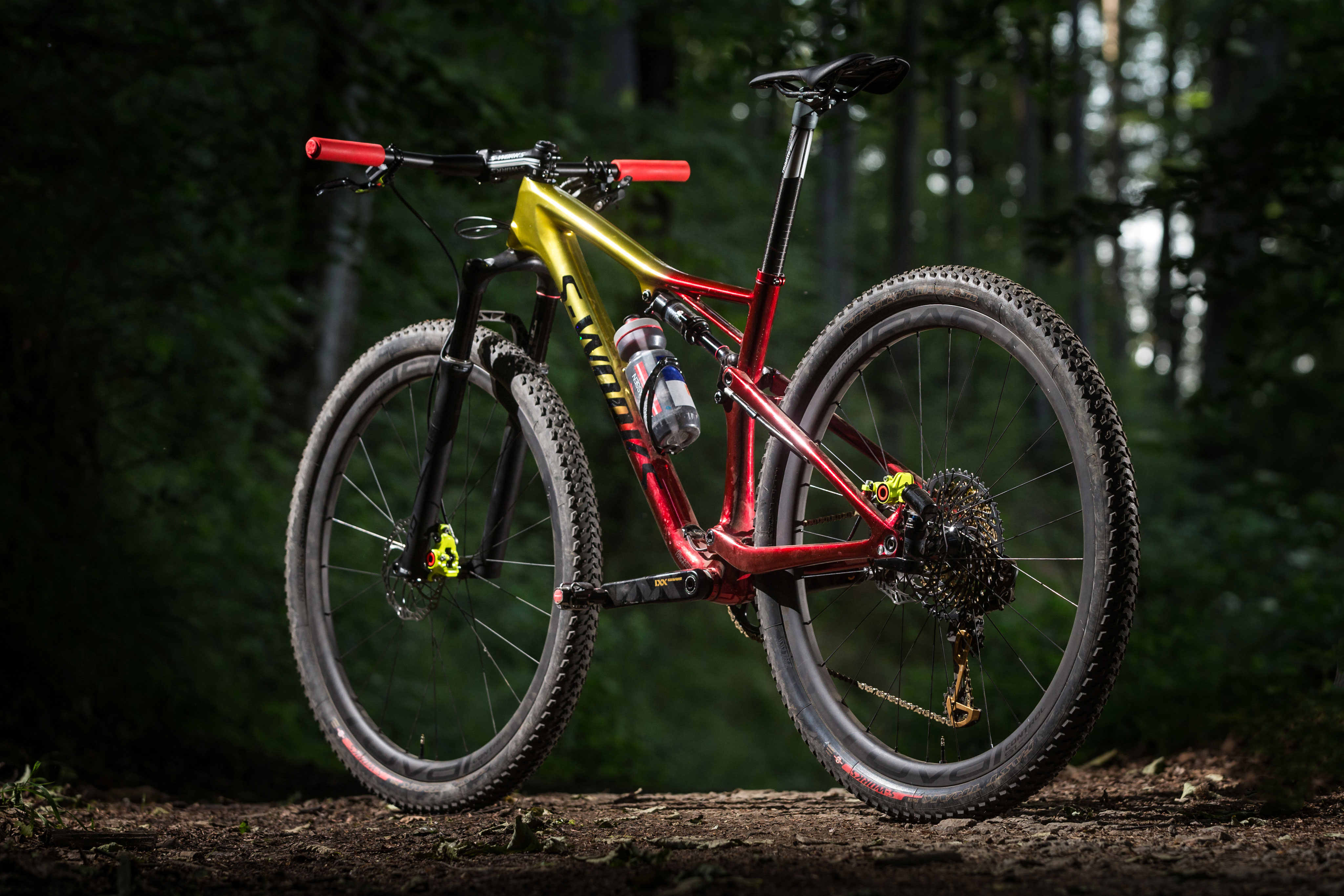
Specialized rethought the design of their BRAIN Suspension technology, and made it more XC compliant. The smart suspension system, is now more compact, saving weight but not compromising on effectiveness. In fact, Specialized placed the BRAIN closer to the rear-axle, allowing the BRAIN to be more sensitive to bumps.
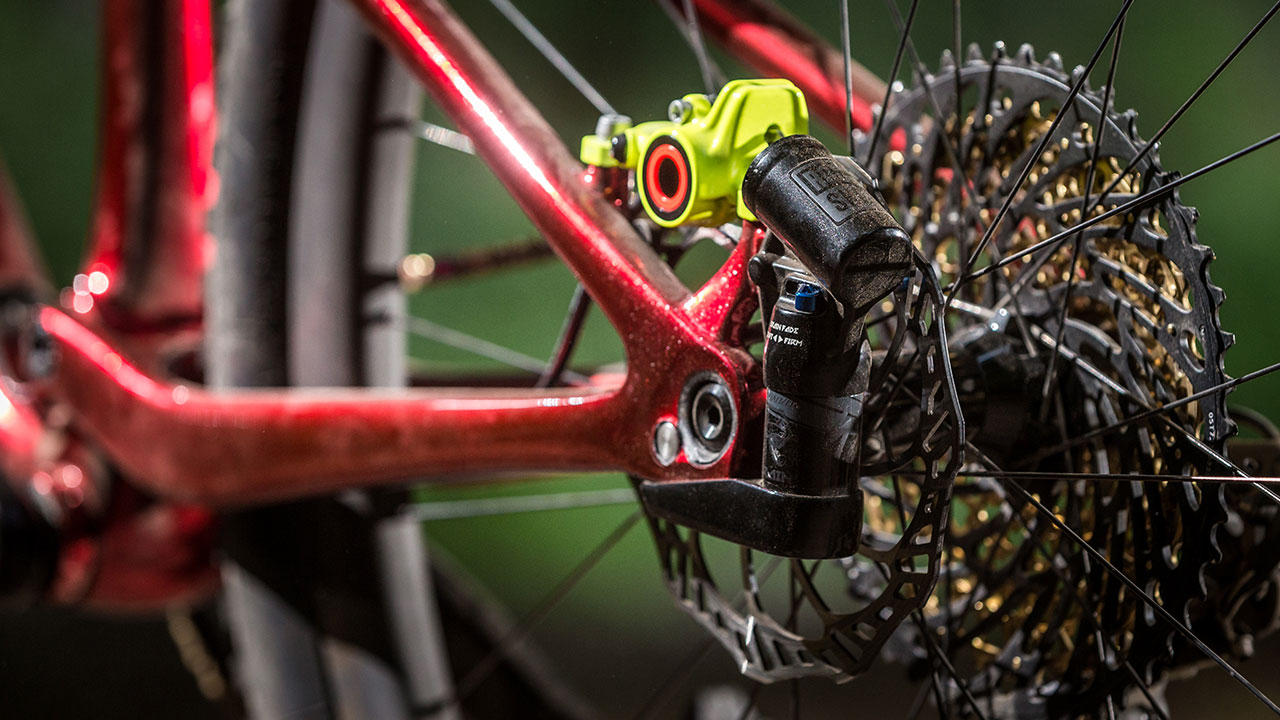
On the geometric side of the frame, the new Epic FSR comes out with longer reach, a slacker, more compliant head-tube, and custom offset on the fork. Overall, this new geometry compliments speed and inspires you to just go for it!

What Specialized has to say:
Redesigned Frame
Rider-First Engineered™ is a technology that we introduced with our Tarmac, and it brings unique layups and tube shapes for every frame size. This allows our engineers to set specific ride quality targets per size, so whether you’re a size Small or an X-Large, you’ll have the same intended ride experience without it being too stiff or riding like a wet noodle.
That’s all fine and dandy, but here’s the impressive part. We were able to make a bike that holds a stiffness-to-weight number that can go toe-to-toe with any of the competition, while also cutting out 240 grams from the rear end (a 39% weight savings) and up to 525 grams out of the frame alone. Yes, you read that correct—525 grams out of the frame alone. That’s the equivalent of taking out an entire Brain shock, shock extension, a few headset spacers, and pivot hardware.
Brain 2.0
The suspension world was turned upside down when Brain was introduced over a decade ago. It was, and is, the only shock that can differentiate rider and trail inputs. It rides firm on smooth terrain and opens when encountering trail/bump force impact. The need for lockout levers, extra cables, and remotes is gone, so no more riding descents and forgetting to open your shock. It does the thinking for you.
Brain 2.0 takes everything that was great from earlier iterations and builds upon them. Moving the Brain closer to the axle, where the moment of inertia happens, creates a more responsive system than ever before. Oil porting and flow paths have been reengineered to reduce oil turbulence and provide more consistent damping. And the suspension team has also addressed hose fitting, so there are no frame rub issues, making this the most visually sleek Brain package yet. Now, the hoses are routed directly through the shock extension, taking out unnecessary curves and fittings, and therefore improving oil flow.
Modern Geometry
Let’s be honest with each other—XC riding and racing has changed. Gone are the race courses that resembled walking paths through the park. In are sections of trail that could be mistaken for an enduro track. We knew we had to address the sharp, often intimidating ride characteristics of XC bikes, so everything was thrown out the window and we started from scratch.
We increased the reach to make for a longer, more stable front end. To keep the rider position consistent with what we have today, we shortened the stem length, which also makes for quick handling. The head angle, meanwhile, was slackened by 1.5 degrees to create an aggressive 69.5-degree angle. Those two changes combine to create a bike that’s much more confident at speed and descending through steep and rough terrain. But you’re probably thinking, “That slack of a head angle will make a cross country bike floppy and slow, right?” Wrong. The bike and suspension team tested dozens of tuning setups and fork offsets until settling on what gave us the best balance of stability and snappy handling, leaving you with a 42mm fork offset. You can have your cake and eat it, too.
Improved rear triangle…
On the 2018 Epic FSR, Specialized removed some suspension pivots, saving 240-grams. The Epic FSR is now what they call; a single pivot dual suspension bike. Its mastered soaking up drops, and being effective on steep technical sections.

Specialized also went the extra mile, and implanted flex zones into the chain-stay and seat-stay. Now, you can feel fairly comfortable on a XC bike!
The new BRAIN innovations, combined with the new FSR single-pivot rear triangle; Specialized have optimised pedalling performance. Proving their statement of Smarter = Faster. Ultimately, the FSR system has upgraded its stiffness to some degree, creating a better platform for energy transfer in the drivetrain area.

